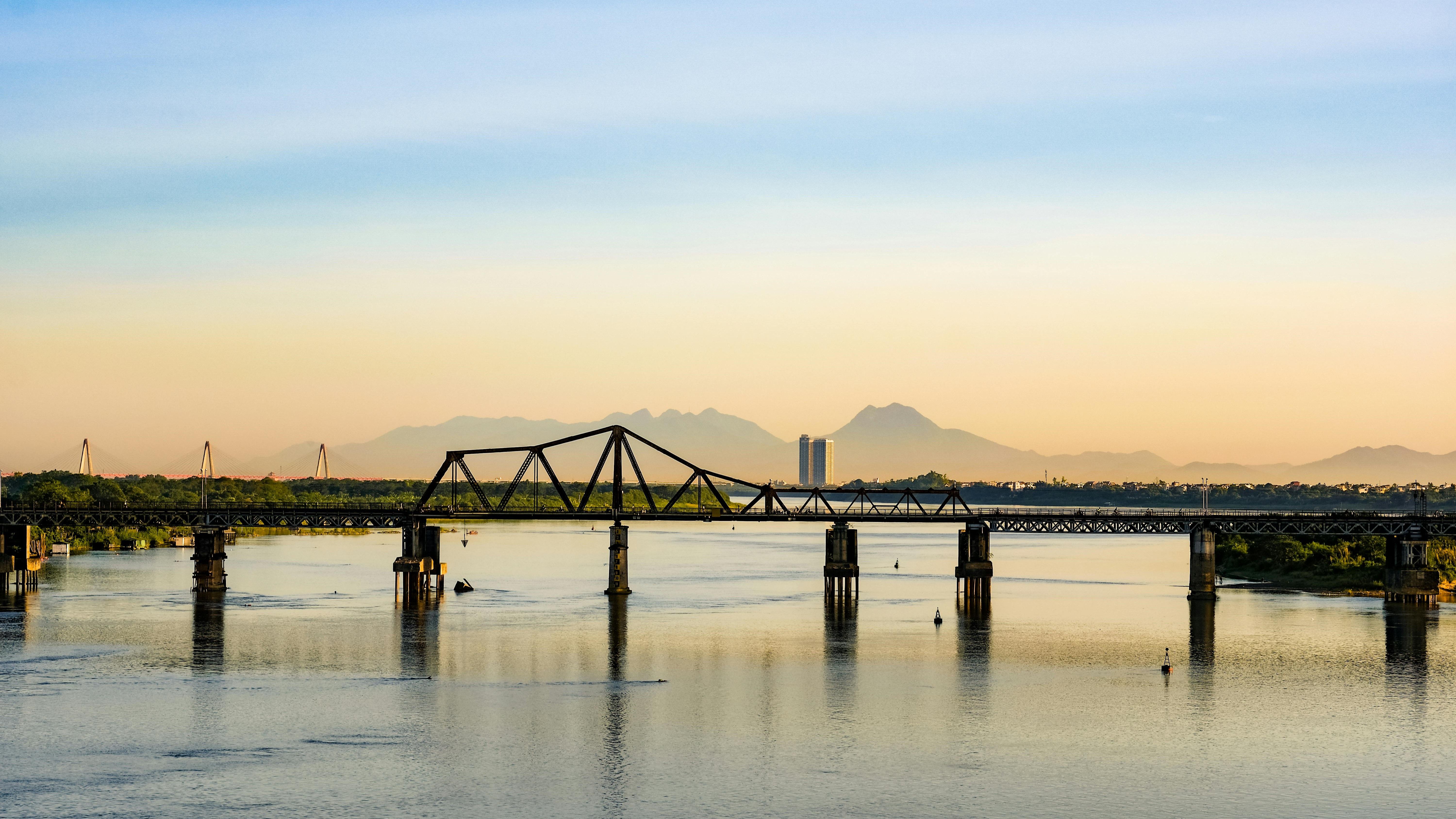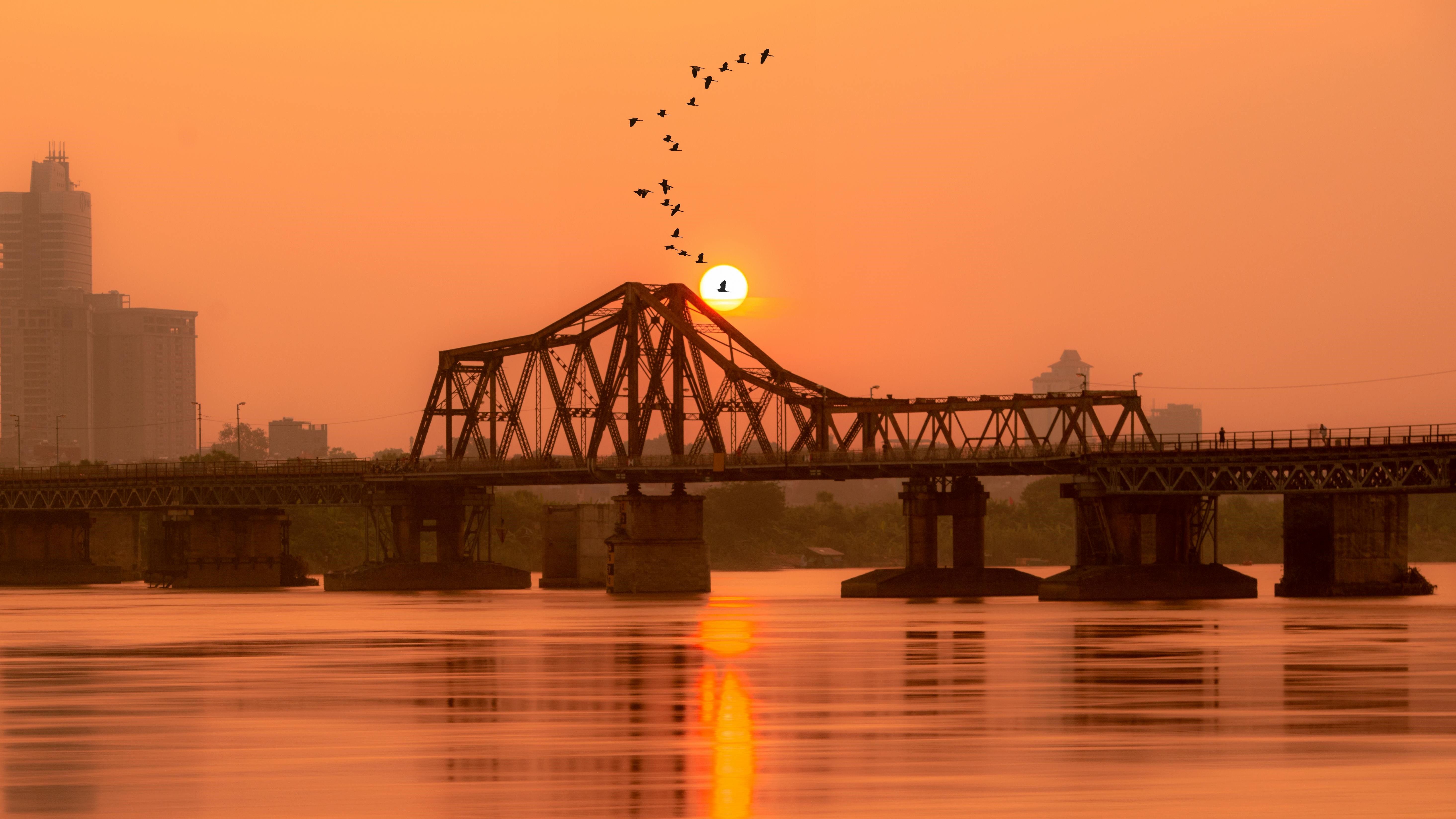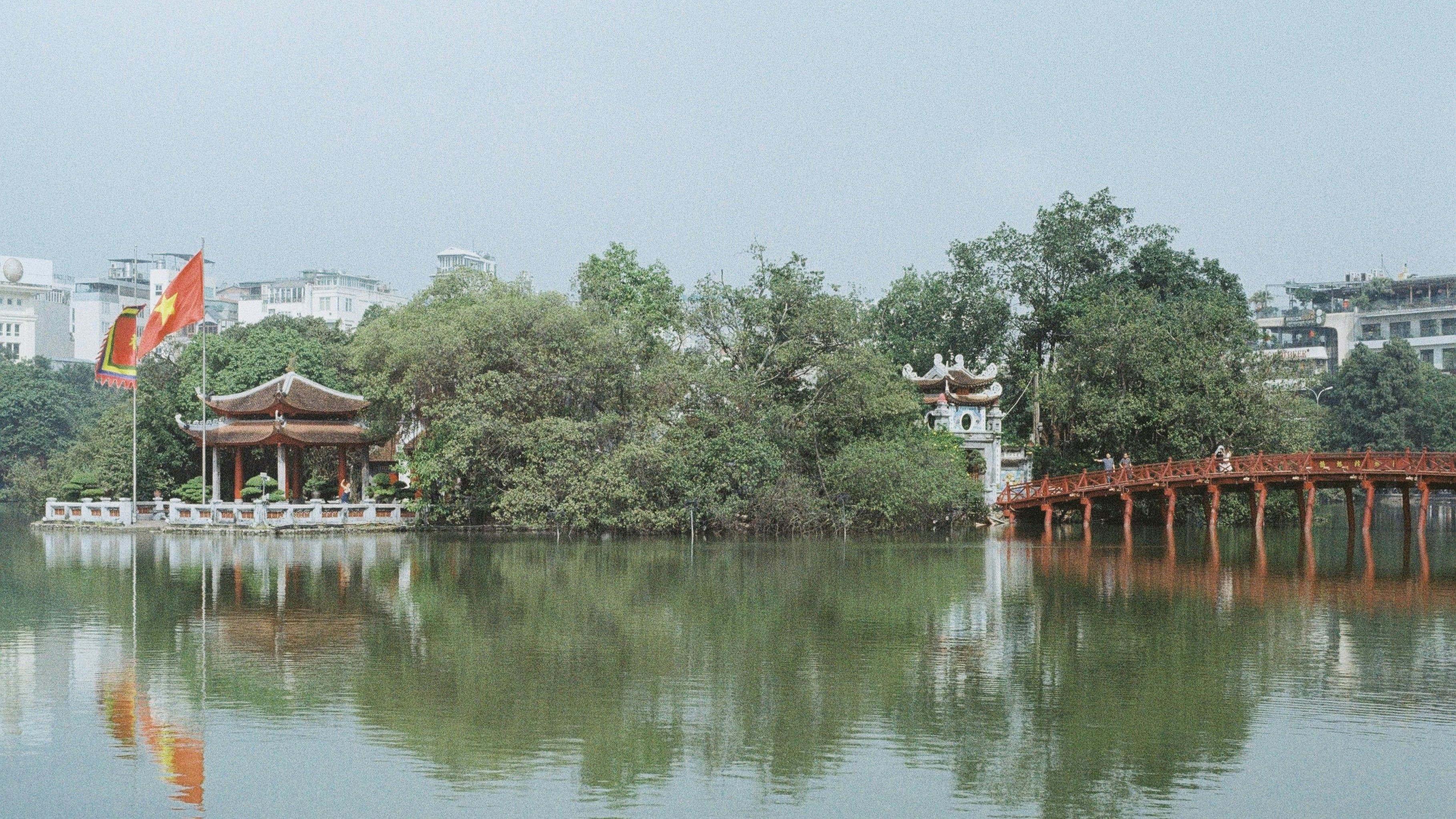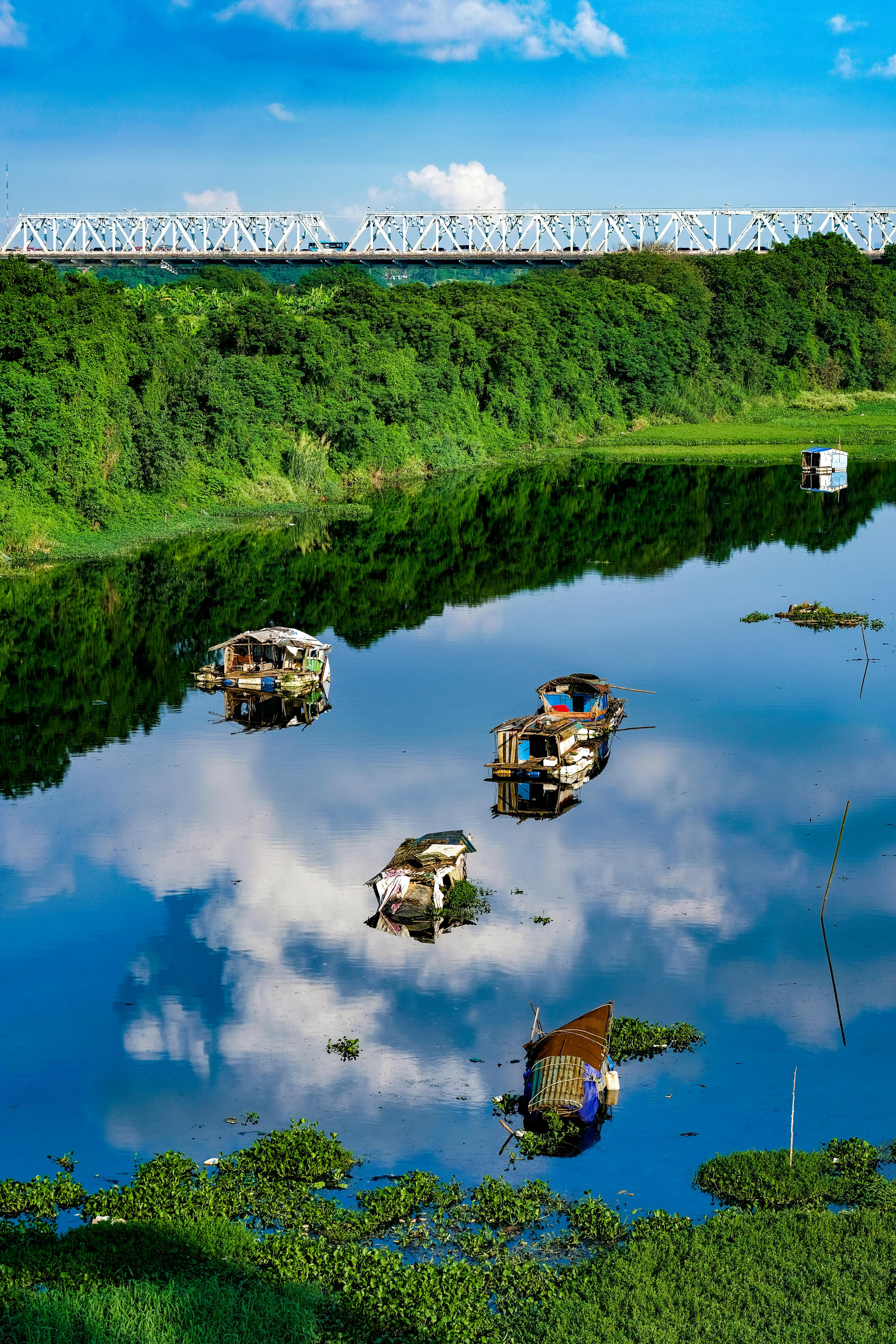
Hanoi’s Bridges: Long Biên, The Huc, and Chuong Duong Bridge
Hanoi’s bridges are not just functional structures; they are historical landmarks that offer a glimpse into the city’s past and present. Among them, Long Biên, The Huc, and Chuong Duong Bridge stand out for their unique significance and architectural charm. Exploring these bridges provides a deeper understanding of Hanoi’s rich heritage and vibrant culture.
Long Biên Bridge

Historical Significance: Constructed between 1898 and 1902 during the French colonial era, Long Biên Bridge was designed by the French architect Gustave Eiffel, renowned for the Eiffel Tower. Originally named the Paul Doumer Bridge, it was a key infrastructure project connecting Hanoi to the northern regions. During the Vietnam War, the bridge was a crucial supply route, often targeted but remarkably resilient, embodying the spirit of perseverance.

Architectural Features: The Long Biên Bridge is a stunning example of early 20th-century engineering. It features a wrought iron design with Gothic arches and a latticework that was innovative for its time. Spanning approximately 1.5 kilometers over the Red River, the bridge has a dual-track railway and two lanes for vehicular traffic. Its ironwork and structural design reflect the engineering expertise of the era, making it a landmark of industrial heritage.
Visitor Tips:
- Photography: Capture the contrast between the historic bridge and the modern cityscape. Early morning or late afternoon offers the best light and fewer crowds.
- Walk or Cycle: For a full experience, walk or bike across the bridge to appreciate its scale and the views of the Red River and surrounding areas.
- Local Life: Observe the daily life of Hanoi’s residents, as the bridge is a major thoroughfare for both trains and motorbikes.
The Huc Bridge

Historical Significance: The Huc Bridge, meaning “Bridge of the Rising Sun,” was constructed in the 19th century to connect the Hoan Kiem Lake with the Ngọc Sơn Temple, situated on an island in the lake. It is an emblematic structure representing Hanoi’s cultural and historical depth. The bridge’s design and vibrant color are meant to symbolize good fortune and protection, integral aspects of Vietnamese tradition.
Architectural Features: This wooden bridge is renowned for its elegant and ornate design. Painted bright red, it stands out against the serene backdrop of Hoan Kiem Lake. The Huc Bridge’s design includes intricate carvings and traditional Vietnamese architectural elements, with lanterns adorning its rails. Its graceful curve and decorative elements contribute to its picturesque and symbolic nature.

Visitor Tips:
- Evening Stroll: Visit the bridge early in the morning or late in the afternoon to avoid crowds and enjoy a peaceful atmosphere.
- Temple Visit: Combine your visit with a tour of Ngọc Sơn Temple, which is accessible from the bridge, to explore more about Hanoi’s cultural heritage.
- Photography: The bridge’s reflection in the lake, especially at sunrise or sunset, creates stunning photographic opportunities.
Chuong Duong Bridge
Historical Significance: Opened in 1985, Chuong Duong Bridge is a relatively modern addition to Hanoi’s infrastructure. It was built to address the growing transportation needs of the city, connecting the Hoan Kiem District with Long Bien District. The bridge plays a critical role in facilitating traffic flow across the Red River and is a vital artery in Hanoi’s transportation network.

Architectural Features: Chuong Duong Bridge is designed with a concrete and steel structure, showcasing a contemporary approach to bridge construction. It spans approximately 1.6 kilometers and features a multi-lane design accommodating both vehicular and pedestrian traffic. The bridge's modern design contrasts with the historic aesthetics of Hanoi's older bridges, reflecting the city’s development.
Visitor Tips:
- Scenic Views: Enjoy panoramic views of the Red River and Hanoi’s skyline from the bridge, particularly at sunset when the city lights begin to sparkle.
- Sunrise Photography: The early morning light offers excellent conditions for capturing the bridge and the river in soft, golden hues.
- Local Experience: Observe the daily hustle and bustle of Hanoi’s transportation network, providing insight into the city’s dynamic urban life.
Additionally, explore our fascinating insights on Hanoi's lakes—check them out here!